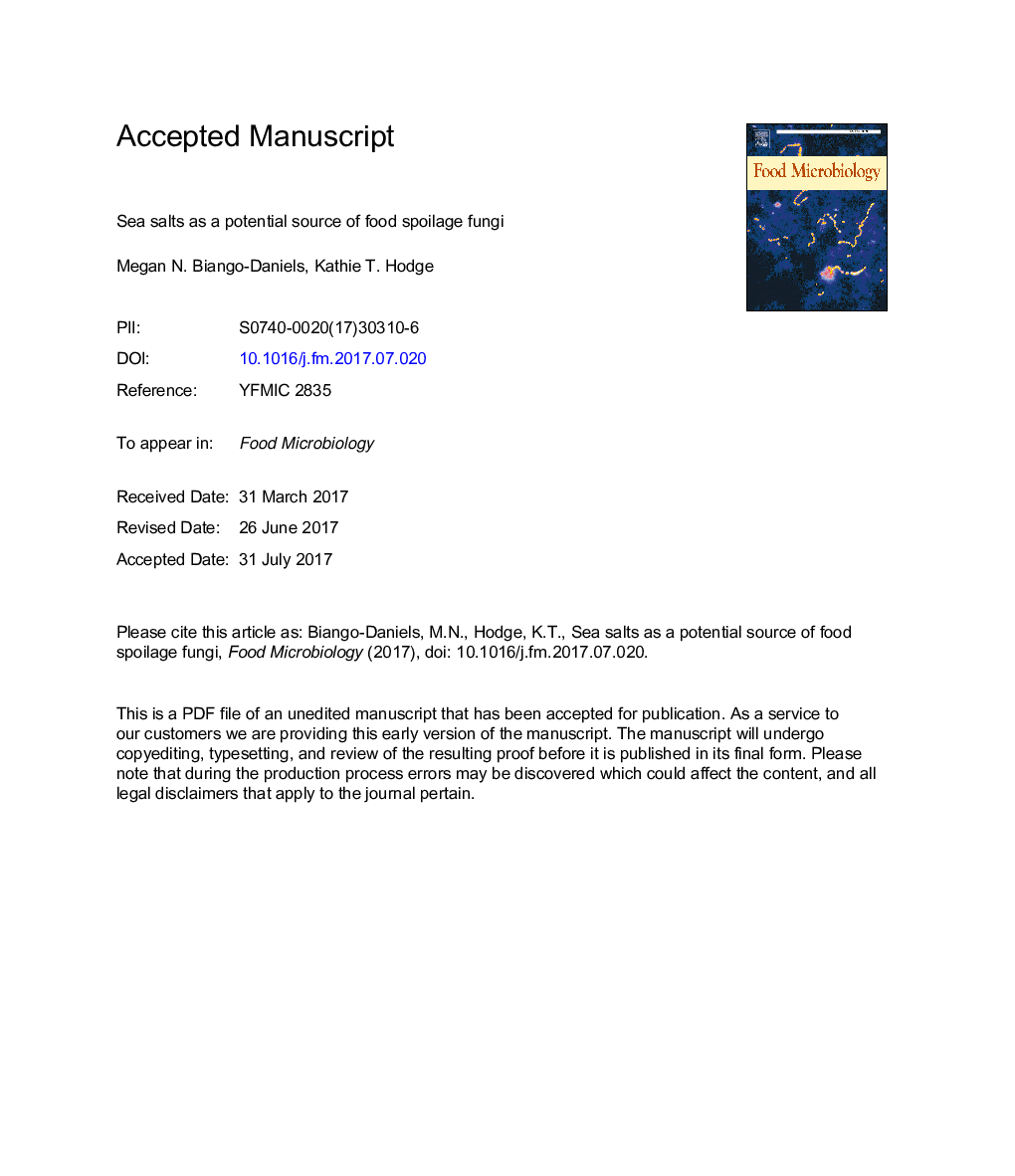| Article ID | Journal | Published Year | Pages | File Type |
|---|---|---|---|---|
| 5740079 | Food Microbiology | 2018 | 33 Pages |
Abstract
Production of sea salt begins with evaporation of sea water in shallow pools called salterns, and ends with the harvest and packing of salts. This process provides many opportunities for fungal contamination. This study aimed to determine whether finished salts contain viable fungi that have the potential to cause spoilage when sea salt is used as a food ingredient by isolating fungi on a medium that simulated salted food with a lowered water activity (0.95 aw). The viable filamentous fungi from seven commercial salts were quantified and identified by DNA sequencing, and the fungal communities in different salts were compared. Every sea salt tested contained viable fungi, in concentrations ranging from 0.07 to 1.71Â colony-forming units per gram of salt. In total, 85 fungi were isolated representing seven genera. One or more species of the most abundant genera, Aspergillus, Cladosporium, and Penicillium was found in every salt. Many species found in this study have been previously isolated from low water activity environments, including salterns and foods. We conclude that sea salts contain many fungi that have potential to cause food spoilage as well as some that may be mycotoxigenic.
Related Topics
Life Sciences
Agricultural and Biological Sciences
Food Science
Authors
Megan N. Biango-Daniels, Kathie T. Hodge,
